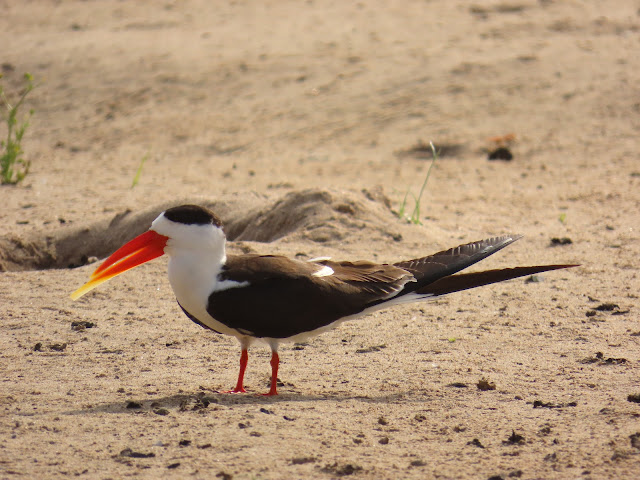 |
| The Indian skimmer. Image credit: Oishimaya Sen Nag |
The world is on the verge of losing an extremely beautiful bird. Its steady decline is indicative of the failing health of our aquatic ecosystems. A 2020 assessment by the IUCN declared the Indian skimmer as Endangered. The bird, once widespread across the Indian subcontinent and Southeast Asia, has gone extinct in several countries. Its breeding population is now restricted only to India. We, Indians, now have a big responsibility - ensure a secure future for these birds.
In April this year, I was fortunate enough to watch the Indian skimmers nesting in one of their last remaining breeding habitats in the Chambal River. This river that flows through the three Indian states of Madhya Pradesh, Rajasthan, and Uttar Pradesh to drain into the Yamuna provides sand bars and sand islands ideal for the nesting of these birds.
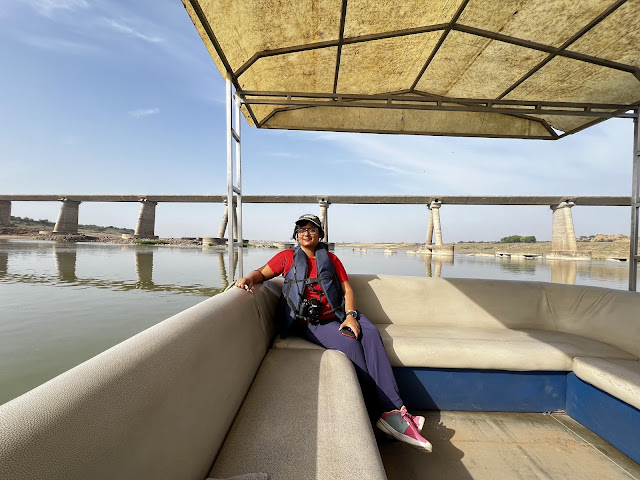 |
| A boat ride in the National Chambal Sanctuary, Rajasthan. |
A boat safari in the Chambal River, starting from Dholpur in Rajasthan, took me to the unique world of these Indian skimmers. You can also access the Sanctuary from Palighat in Rajasthan and Morena in Madhya Pradesh. The boat safari is the best way to witness these birds in their natural habitat. Of course, the river is also home to the critically endangered gharials, the vulnerable muggers, threatened species of turtles, and much more.
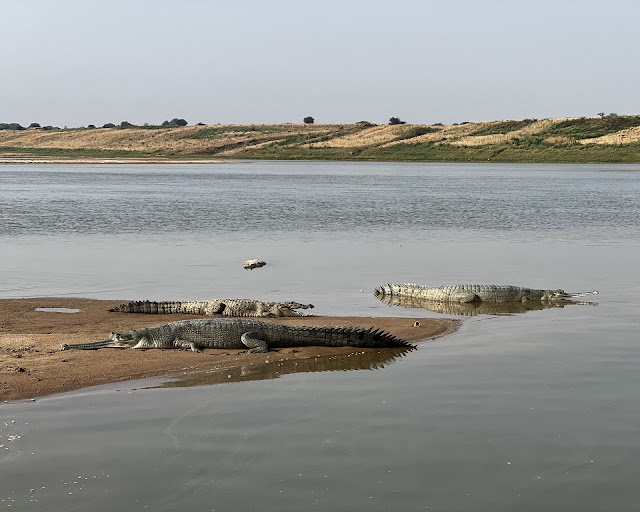 |
| Gharials and mugger in the Chambal River. Image credit: Arijit Nag |
The Indian skimmers breed colonially. With the onset of summer, the breeding pairs start nesting. They dig out small burrows or make scrapes in the sand of sand bars and islands on the river to lay their eggs. Identifying these dainty-looking birds is quite easy among the many other birds like the black-bellied tern that you will see sharing the habitat with them. The Indian skimmer's black upperparts contrast starkly with the white forehead and underparts. The bill is most striking in appearance. It is long, deep, bright orange in colour with yellow tips, and the lower mandible is longer than the upper one. The bird gets its name from its habit of "skimming for fish" in the waters. It flows low above the water surface and scoops out fish from the water with its beak.
The median clutch size of Indian skimmers is three. After around 22 days of incubation, the hatchlings emerge. However, the species has a very low nesting success. As per IUCN, only around 43% of the eggs hatch and 35% of the hatchlings reach the fledgling stage in the National Chambal Sanctuary. The habitat specificity of these birds makes them extremely vulnerable to a multitude of threats, which became clear to me during the boat safari.
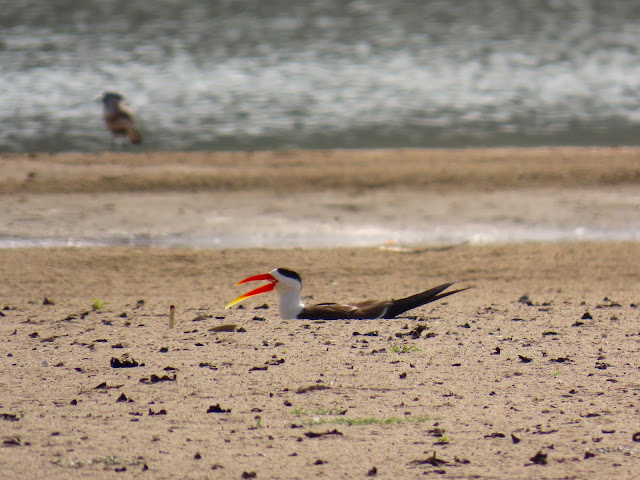 |
| The Indian skimmer nesting in the sand. Image credit: Oishimaya Sen Nag |
For Indian skimmers to successfully nest, water levels in the river must be optimum. Too much water will cause the nests to drown, and too little water will connect the sand bars and islands to the banks, making predation of the eggs and hatchlings easy.
The existence of infrastructure projects in the Indian skimmer's habitat is one of the biggest threats to the bird. For example, four dams and several irrigation projects exist along the Chambal River, making the water levels in the river often very unpredictable due to sudden release or extraction as per the need of the projects. There have been several incidents of the nests of these birds being washed away due to the sudden release of water from upstream dams.
On the other hand, extensive river water extraction for irrigation, as well as the increasingly hot summers caused by climate change, lead to the drying up of the water, creating a continuous passage across the river. Feral dogs and jackals can then easily tread into Indian skimmer territory, predating on the eggs and young ones. Grazing animals also move across, trampling the nests of these birds. Occasionally, eggs and chicks are also harvested for consumption by the local people.
Another major threat to the Indian skimmers is the rampant illegal sand mining in the Chambal River. The fine sand from the river is plundered in broad daylight and transported away for the market, damaging the river's ecosystem. Over the years, many have lost their lives trying to stop the sand mining mafia in the region but with no success.
 |
| Indian skimmers in flight above the Chambal River with sand mining happening in the background. |
River pollution is another factor contributing to the loss of Indian skimmers. The food and habitat quality of these birds degrade with pollutants entering the water, affecting the birds in the long run.
Also, it is important that visitors who take boat safaris to view skimmers and gharials do not approach too close to these birds as it disturbs their nesting behaviour.
Finally, those birds that manage to survive these ravages usually fly off to the coastal areas of India in the non-breeding season where they can be seen in the mudflats and saltpans. Some stay back or spread out to the nearby rivers and lakes.
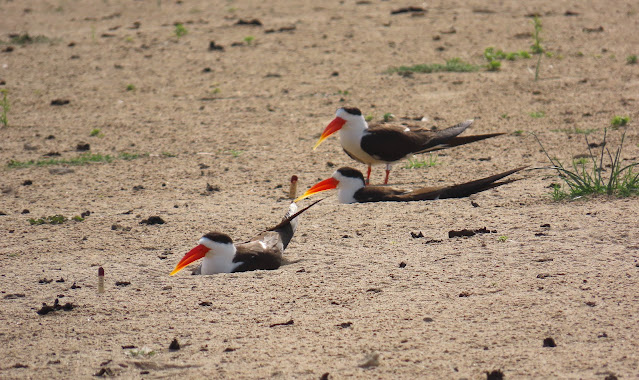 |
| Indian skimmers in the sand bar of the Chambal River. Image credit: Oishimaya Sen Nag |
Today, only around 2,900 mature Indian skimmers survive in the wild. Conservation efforts have been launched by conservation organisations like the Bombay Natural History Society (BNHS) to save the species. The BNHS has set up a nest guardianship program whereby locals guard the nests of Indian skimmers from predators and trampling by cattle. Other conservation interventions are also being executed.
Saving the Indian skimmers translates to protecting our vital riverine ecosystems that sustain our massive population. Hence, more concerted efforts are needed from the various stakeholders to preserve and protect these beautiful birds of India.
Written by: Dr. Oishimaya Sen Nag
No comments:
Post a Comment